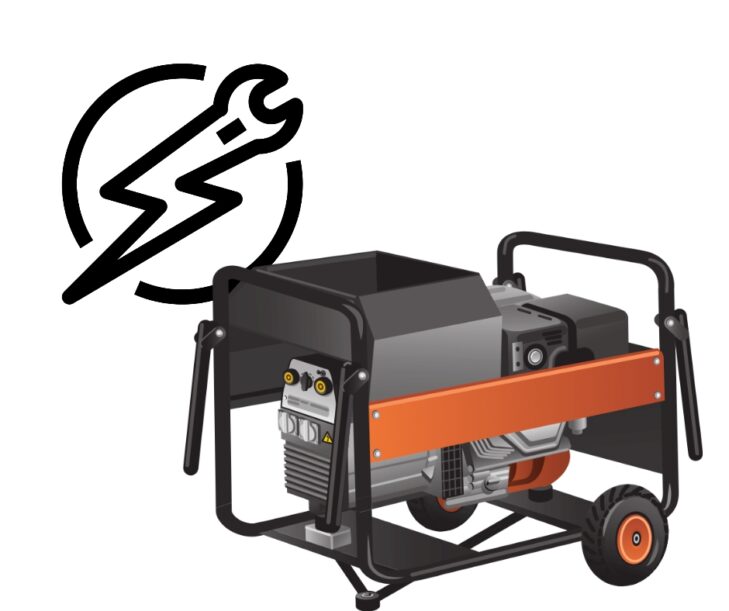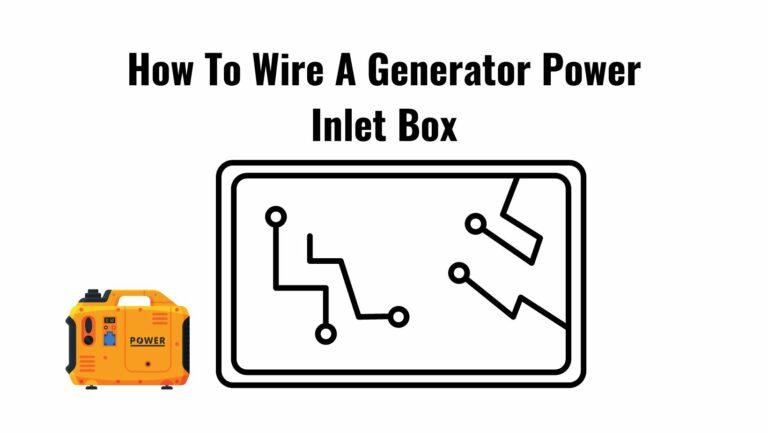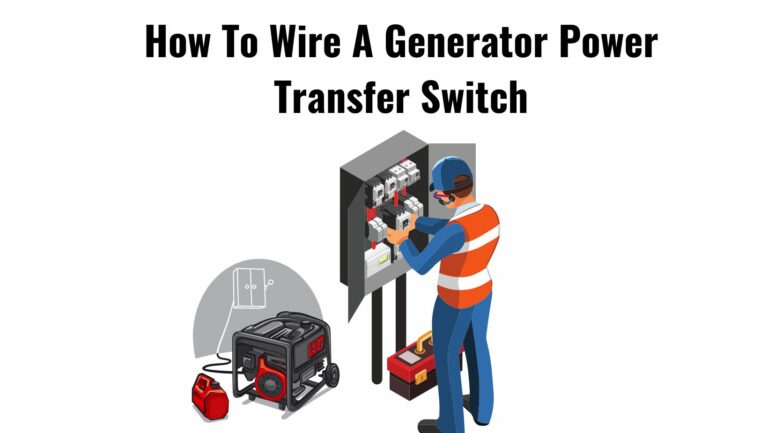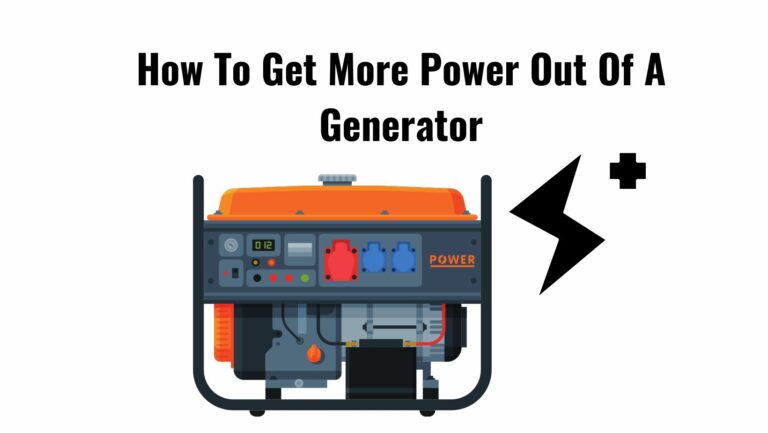
Generators are an essential component of our daily lives. They provide power when there is an interruption in the electricity supply, making them crucial for homes, offices, and even industries.
However, sometimes generators may stop working, and the most common problem that arises is the generator having no power. In such cases, it becomes crucial to identify the cause and take corrective measures to restore power.
This blog post aims to guide you through the process of fixing a generator that has no power. The purpose of this post is to provide practical and straightforward advice on how to diagnose the issue and take corrective action, whether on your own or with professional help. Whether you’re a homeowner, business owner, or simply someone who wants to be prepared in case of a power outage, this blog post is for you.

In the following sections, we’ll discuss the common causes of a generator with no power, steps to diagnose the issue, and ways to fix it. We’ll also provide tips on how to prevent the problem from happening again in the future. So, let’s get started!
Identifying the Cause of the Problem
A generator with no power can be caused by a variety of factors, ranging from simple to complex. Inaccurately diagnosing the issue could lead to further damage and higher repair costs, making it imperative to identify the cause of the problem accurately. Here are some common causes of no power in generators and steps to diagnose the issue.
- Checking the Circuit Breaker (fuses) or GFCI Breaker: The first step in diagnosing a generator with no power is to check the circuit breaker or fuses. If the circuit breaker trips or the fuses blow, it can cause the generator to lose power. To diagnose this issue, simply locate the breaker or fuses and reset or replace them as needed.
- Checking the Power Outlets: The power outlets can also be a source of the problem. If the power outlets are not functioning, it could cause the generator to lose power. To diagnose this issue, try plugging in a different device to see if it works. If the other device works, then the issue is with the generator, and you should proceed to the next step.
- Checking the Spark Plug or Capacitor Defective: The spark plug or capacitor could also be the cause of the problem. If either the spark plug or capacitor is defective, it can cause the generator to lose power. To diagnose this issue, check the spark plug for damage or corrosion and replace it if needed. You should also check the capacitor for any signs of damage or wear and replace it if needed.
- Checking the Defective Breaker or AVR Defective (Automatic Voltage Regulator): The breaker or AVR can also be the source of the problem. If either the breaker or AVR is defective, it can cause the generator to lose power. To diagnose this issue, check the breaker and AVR for any signs of damage or wear and replace them if needed.
It is important to accurately identify the cause of the problem because an incorrect diagnosis could result in further damage to the generator, leading to higher repair costs. By following these steps, you should be able to identify the cause of the problem and take the necessary corrective action.
Fixing the Problem
Once you have accurately identified the cause of the problem, you can proceed with fixing the issue. Here are the steps to fix the problem, depending on the cause:
- Circuit Breaker (fuses) or GFCI Breaker: If the circuit breaker or fuses are the cause of the generator’s lack of power, it is important to reset or replace them as needed. First, locate the circuit breaker or fuse box, which is typically located near the generator. Check if any of the circuit breakers have tripped or if any of the fuses have blown. If so, reset the circuit breaker or replace the fuse as necessary. This should restore power to the generator. If the issue persists after resetting the circuit breaker or replacing the fuse, there may be a deeper issue at play, and professional help may be needed.
- Power Outlets: If the power outlets are the cause of the problem, it is important to replace the faulty outlet with a new one. Locate the faulty outlet, and turn off the power to the generator. Carefully remove the faulty outlet, and replace it with a new one. Make sure to connect the wires securely to the new outlet, and turn the power back on to the generator. This should restore power to the generator. If the issue persists after replacing the outlet, there may be a deeper issue at play, and professional help may be needed.
- Spark Plug or Capacitor Defective: If the spark plug or capacitor is the cause of the problem, it is important to replace the defective component with a new one. Locate the spark plug or capacitor, and turn off the power to the generator. Carefully remove the defective component, and replace it with a new one. Make sure to connect the wires securely to the new component, and turn the power back on to the generator. This should restore power to the generator. If the issue persists after replacing the component, there may be a deeper issue at play, and professional help may be needed.
- Defective Breaker or AVR Defective (Automatic Voltage Regulator): If the breaker or AVR is the cause of the problem, it is important to replace the defective component with a new one. Locate the breaker or AVR, and turn off the power to the generator. Carefully remove the defective component, and replace it with a new one. Make sure to connect the wires securely to the new component, and turn the power back on to the generator. This should restore power to the generator. If the issue persists after replacing the component, there may be a deeper issue at play, and professional help may be needed.
It is important to follow the steps carefully and safely to avoid any potential hazards. If you are unsure of how to complete any of the steps, it is recommended to seek professional help.
In some cases, fixing the issue may require more advanced knowledge and skills, or specialized tools and equipment. If you are unable to diagnose or fix the issue on your own, it is recommended to seek professional help. A qualified technician will have the expertise and equipment needed to diagnose and fix the issue quickly and efficiently.
However, fixing a generator with no power can be a straightforward process, as long as you accurately identify the cause of the problem and follow the steps to fix it. By following these guidelines, you should be able to restore power to your generator in no time.
Preventive Measures to Avoid No Power in Your Generator
A generator is an important tool to have on hand, especially in emergency situations. However, if your generator has no power. it can be frustrating and prevent you from using it when you need it most. To avoid this issue, it’s important to take preventive measures. Here are some steps you can take to prevent your generator from losing power:
- Regular Maintenance: Regular maintenance of your generator is crucial in avoiding any issues. This includes checking and replacing parts as needed, such as the spark plug, air filter, and oil level. Keeping the generator clean and free of debris can also help prevent issues.
- Proper Usage: Proper usage of your generator is important to avoid any issues. This includes following the manufacturer’s guidelines for operating the generator. such as not overloading it and only using it in a well-ventilated area.
- Correct Storage: Proper storage of your generator is also important in avoiding any issues. This includes keeping it in a dry, well-ventilated area, and making sure it is protected from moisture, dust, and other elements that could cause damage. Storing the generator with a full tank of fuel can also help prevent stale fuel issues.
By taking these preventive measures, you can help ensure that your generator runs smoothly and avoids any issues. This can save you time and money in the long run, as well as extend the lifespan of your generator, ensuring that it is reliable and ready to use when you need it.
Final Thoughts on Why No Power in Your Generator
Having a generator with no power can be frustrating and prevent you from using it when you need it most. However, by following the steps outlined in this blog post, you can diagnose the issue, fix it, and take preventive measures to avoid this issue in the future.
Whether the problem is with the circuit breaker or fuses, power outlets, spark plug or capacitor, or the breaker or AVR, taking the time to diagnose and fix the issue can help ensure that your generator is ready to use when you need it.
Additionally, by taking preventive measures, such as regular maintenance and proper usage and storage, you can help extend the lifespan of your generator and ensure it is reliable for years to come.






